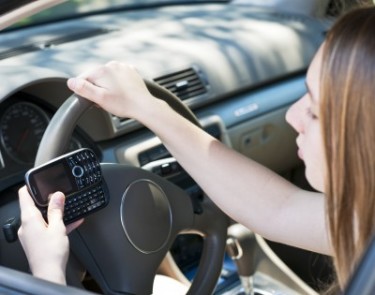
The study demonstrates a clear disconnect between drivers’ perception of their driving abilities and their actual driving abilities. This disconnect makes it difficult for a driver to honestly examine their driving behavior and make corrections, which is perhaps why more than 3,000 people were killed and over 416,000 were injured in crashes involving distracted driving in 2010—despite the ample evidence available to the public showing the dangers of distracted driving.
Those who want an honest look at how well they drive should look at how their teenage kids drive.
A new study by Toyota Motor and the University of Michigan highlights the severity and pervasiveness of the distracted driving problem, showing that teenagers whose parents engage in distracted driving are far more likely to do so themselves.
Teenagers often mimic the dangerous behaviors of their parents, despite cautions or warnings. The old adage, “Do as I say, not as I do,” does not hit home for most teenage drivers. “Children look to their parents for a model of what is acceptable,” according to Dr. Ray Bingham, research professor at the University of Michigan’s Transportation Research Institute.
In addition, teenagers need not see their parents engaged in distracted driving; they need only think that their parents drive while distracted. While teens whose parents reported “dealing with passenger issues” are two times as likely to follow their behavior, teens who think that their parents deal with passenger issues are five times more likely to follow to do the same.
According to Dr. Bingham, “Overall, teens think that their parents engage in distracted driving more often than what may be the case, which may allow them to justify certain high-risk behaviors behind the wheel.”
Teenagers send more texts and emails while driving and are more likely than any other age group to crash while using cell phones, according to the National Highway Traffic Safety Administration. (26% of teens admit to reading or sending a text message each time they drive, compared to 9% of adults.) The leading cause of death for teenagers is car accidents, according to the Centers for Disease Control and Prevention.
Because teens are far likelier to justify and continue the risky driving behaviors that they learn, it’s important for parents to set a good example for their kids. Doing so may help prevent the thousands of accidents, injuries, and deaths that happen every year due to distracted driving.
Source: “Are You a Good Driver? Ask Your Teenager” by Joann Muller, published at Forbes.com.